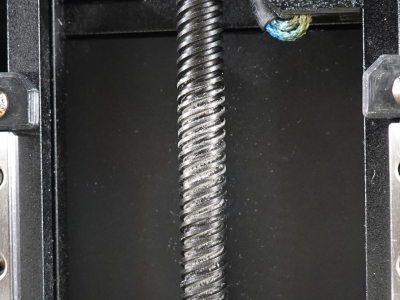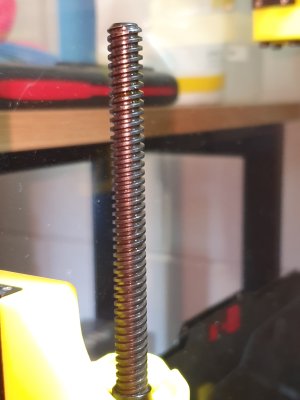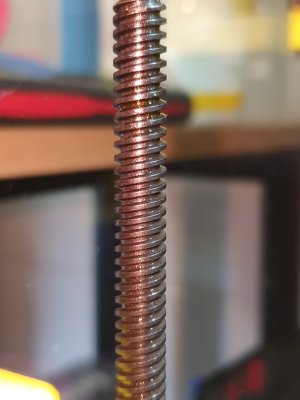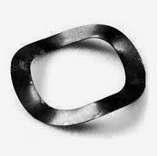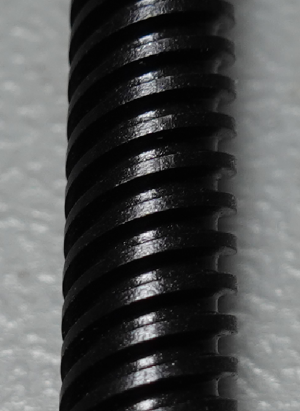On the 0.2, the screws were loose...
The problem is elsewhere. Not speaking of the PTFE coating (poor surface finish) ! Looks like a pan (shot a few macros to be sure).
Replaced the nut + AB nut, and stress tested it : z-hop 0.4 mm ; they failed after 40 hours !!! (jam)
Currently testing something different : new nut + AB nut (same batch as the previous one), + a washer and a wave washer (spring) under the screw heads. Tightened the screws all way down, then unscrewed 1/2 turn, giving a preloaded 0.25 mm axial play without radial constraint (just some light friction).
Also, instead of reusing the stock spring, I installed a spring from a brass kit. Thinner wire, longer, much weaker.
z-hop 0.2 instead of 0.4. Prints perfectly, no backlash issue. No powder build up after 25 hours. So far so good... Still didn't have to readjust the z offset.
This being said, this printer will get a belted Z ASAP. I'm done with leadscrews.
[EDIT] maybe we could help the nut sliding sideways against the Z joint, with some silicone grease (on the nut upper flat, NOT on the threads !)
Wave washer :
View attachment 4638


